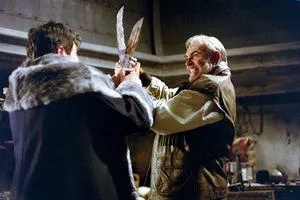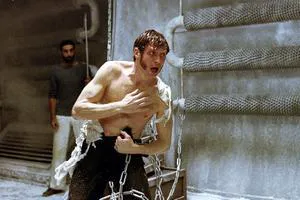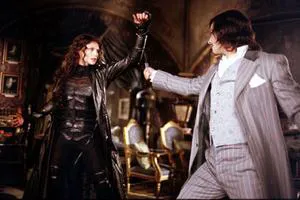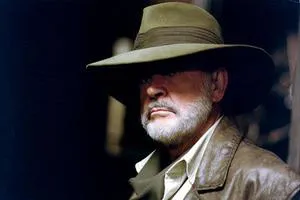The League of Extraordinary Gentlemen: A Steampunk Spectacle
For those who skipped their childhood reading, or for anyone curious to see how such an unlikely combination of literary figures could come together, look no further than Stephen Norrington’s “The League of Extraordinary Gentlemen.” Imagine Mark Twain’s Tom Sawyer as an American spy, Oscar Wilde’s Dorian Gray entangled with Mina Harker (long since bitten by Bram Stoker’s Dracula), Robert Louis Stevenson’s Dr. Jekyll and Mr. Hyde relocating to Paris, and the late Invisible Man’s (H.G. Wells) reserve elixir stolen. Add to this Alan Quatermain (H. Rider Haggard), mourning the loss of his family, and a destroyed Nautilus, and you have the ingredients for a truly bizarre adventure.

This adaptation of Alan Moore and Kevin O’Neill’s comic book series feels surprisingly familiar. Unlike the X-Men or Spider-Man, this comic draws its inspiration from classic literature. It’s the kind of story that pokes fun at beloved characters, much like the irreverent parodies we might have created in school.
A Cultural Mashup
The comic’s concept is surprisingly sophisticated. Moore and O’Neill selected only those “extraordinary gentlemen” who were created before the 20th century and could plausibly still be alive in 1899. This sets the stage for a narrative that suggests our present is a direct result of the “golden age of literature,” with all its triumphs and consequences. The film embraces this humorous idea, pushing it almost to perfection.

Steampunk Anachronisms
Imagine a prehistoric tank rolling through the streets of 1899 London, storming an imperial bank, and engaging in a shootout with countless constables. Picture British infantry stylishly blowing up zeppelins in Berlin laboratories. A masked villain seeks to ignite a world war by disguising his forces and kidnapping brilliant scientists. The film takes us on a journey through Africa, London, Paris, Venice, and Japan, all rendered in the nascent Art Nouveau style.
The attention to detail is remarkable. The furniture is pseudo-Gothic, the gloves are gauntlets, and the goggles are like canned goods. Captain Nemo’s Nautilus is exactly as it was envisioned in contemporary illustrations of Jules Verne’s novels, complete with black wrought-iron swirls on its silver hull and colonnades on deck. The film even captures the essence of early cinema with a scene featuring a sound recording and static black-and-white images.

Artificiality and Spectacle
The more complete the stylization, the richer the associations. The film showcases the achievements of the industrial revolution, using computer graphics to create stunning visuals, such as the destruction of Venice and the demise of Dorian Gray. While some may find the artificiality of the world distracting, the water in the ocean surrounding the simulated Nautilus looks surprisingly real.
“The League of Extraordinary Gentlemen” is less a movie and more a spectacle, akin to an advertising billboard brought indoors. It constantly demands attention, offering a barrage of visuals designed to captivate the audience.

The Absence of Plot
The film’s biggest flaw is its lack of a compelling plot. The gentlemen assemble, their identities are revealed, and they chase the villain around the world. However, it’s clear from the outset that the villain will be caught and defeated. Without a central mystery to bind the characters together, the film relies on disjointed vignettes and superficial character development. The result is a visually stunning but emotionally shallow experience.

A Glimpse into the Future of Spectacle?
Despite its flaws, “The League of Extraordinary Gentlemen” may offer a glimpse into the future of entertainment. Sean Connery, who starred in and produced the film, clearly sees the potential of these types of visual spectacles.
Perhaps this is the direction entertainment is heading. However, to truly embrace this artificial and meaningless spectacle, the film should have been shorter and more repetitive, like a commercial that gains value through constant repetition.